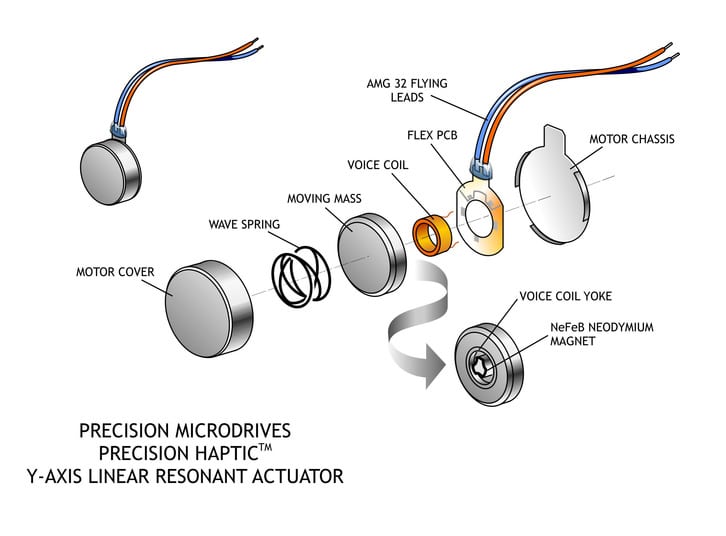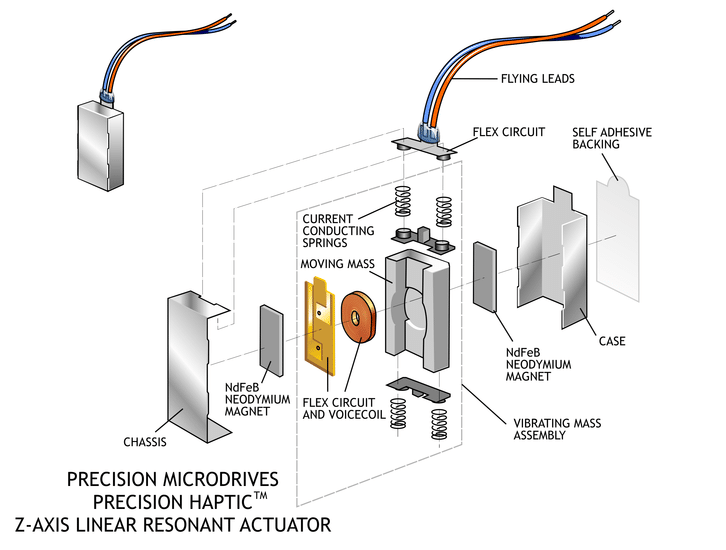Understanding Horizontal Linear Resonant Actuators
Throughout our technical content, such as our pages on vibration motors or Application Bulletins, we often discuss linear resonant actuators. We also never (seem) to say they vibrate in only one direction, unlike a standard eccentric rotating mass vibrating motor.
Often, we say the vibration direction is in the vertical axis, in reference to the C10-100 which has a coin or pancake form factor and is intended to be mounted on its back (with a self-adhesive pad to prove it). The construction is fairly simple, a moving mass with a magnet is attached to a spring when an electrical signal is put through a coil it causes the magnet to move. When the electrical signal is at the appropriate (resonant) frequency, the vibration strength dramatically increases:

However, this is no longer the case!
Well, this is still how the C10-100 works. Although with this drawing of our (since depreciated) C13-000, you can now produce vibrations in the X-axis with an LRA. It works on much the same principle, but the moving mass is attached to four springs in the corners of the casing, and allow it to move from side to side. It is still driven with an analogue signal at a resonant frequency because it is still a mass with a magnet attached to springs.
The diagram below is not an exact representation of the C13-000, however, it’s close enough for illustrative purposes:

In light of our recent Application Bulletin 014: Mechanical Layout of Vibration Motors for Typical User-Interfaces and Controls, having the choice of LRAs that vibrate in different directions can only serve to help!

Get in touch
Speak to a member of our team.
Motor catalogue
Looking for our products?
Reliable, cost-effective miniature mechanisms and motors that meet your application demands.
Discover more
Resources and guides
Discover our product application notes, design guides, news and case studies.
Case studies
Explore our collection of case studies, examples of our products in a range of applications.
Precision Microdrives
Whether you need a motor component, or a fully validated and tested complex mechanism – we’re here to help. Find out more about our company.